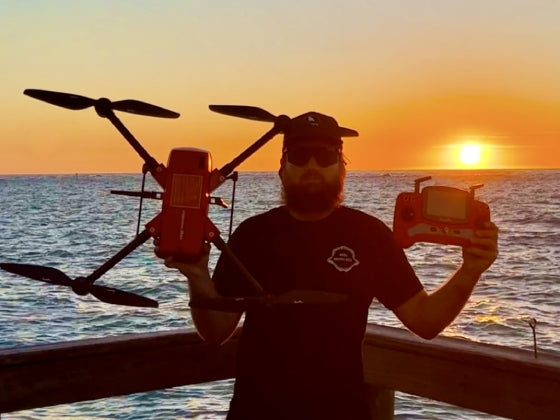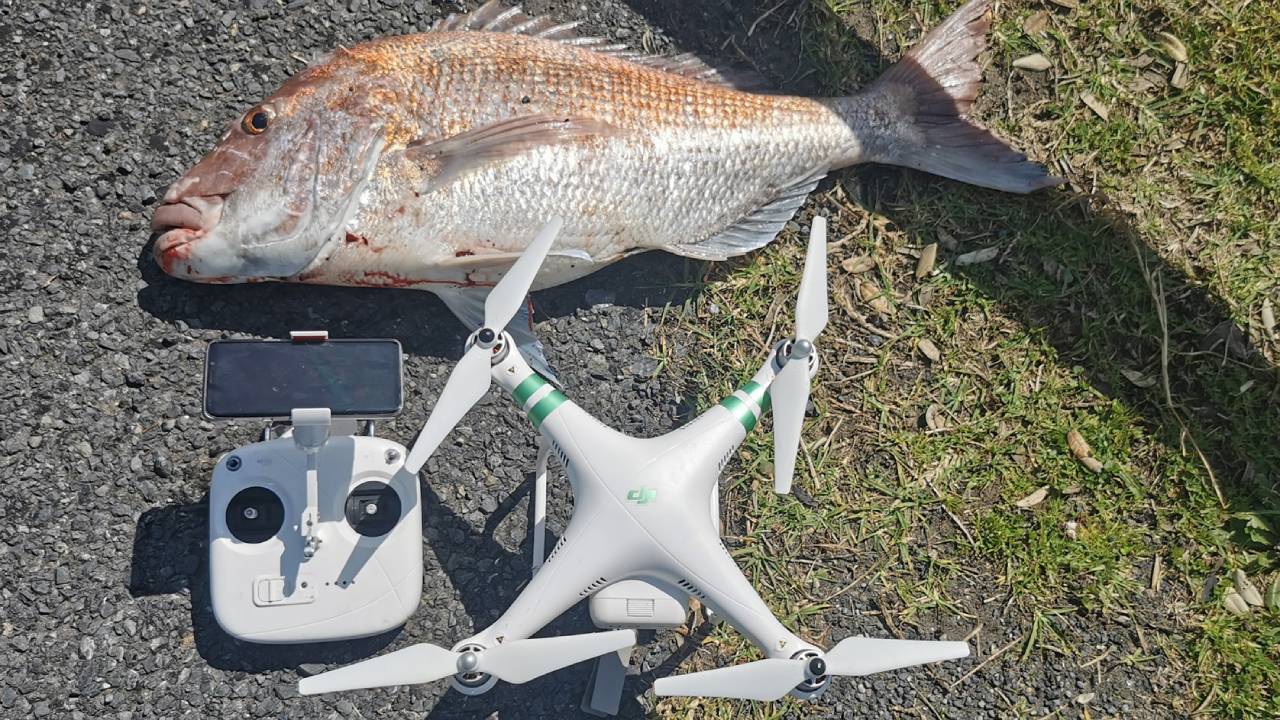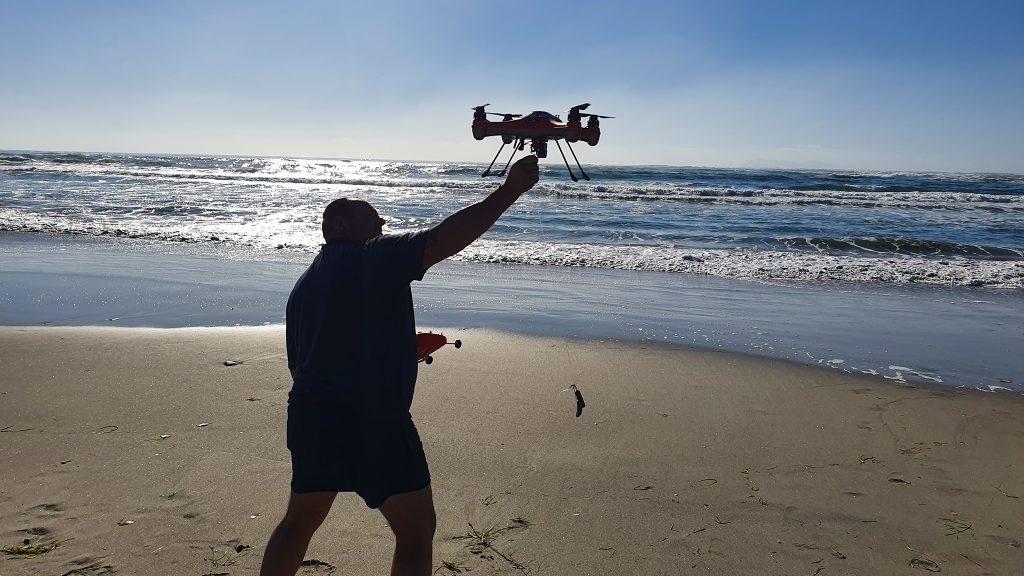While DJI primarily designs drones for aerial photography and videography, their drones have been repurposed for surf fishing by many fishermen all around the world.
They can attach a fishing line and a small bait release, either homemade or ready-made ones from a third-party, to the drone, allowing it to fly out over the water and drop the bait in a desired location. This can be particularly useful for reaching areas that are difficult to access from the shore. At the same time, some find it very handy when utilizing DJI drones fitted with high-resolution cameras for spotting fish.
However, when using DJI for fishing, there are several risks you might not be aware of. Not knowing those risks can waste you lots of money and time, which we will discuss later.
Another thing you need to know is that DJI is not the only option for fishing. A few purpose-built fishing drones like SwellPro SplashDrone series have long existed with design and features that make drone fishing more efficient and safe. After reading this article, you will know whether you should go for a DJI with a third-party bait release or a purpose-built fishing drone with everything you need on board.
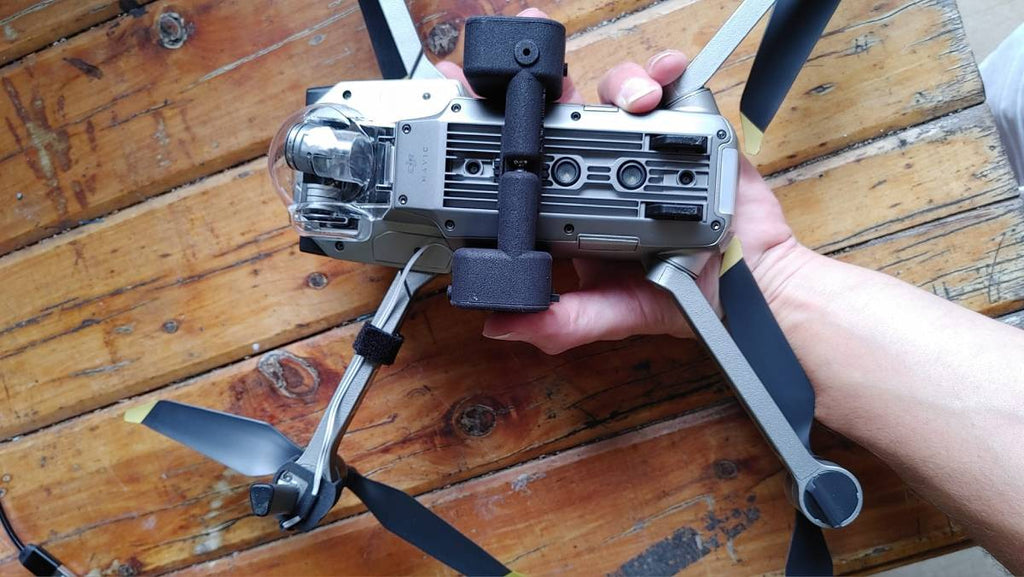

Can you use a DJI drone for fishing?
The answer is “not recommended”. I am not saying that DJI cannot be used for fishing. There are several reasons why DJI drones may not be considered ideal for fishing:
- Not waterproof: DJI drones are generally not designed to operate in wet or water-based environments despite that some of their industrial-grade models (which are quite expensive) can resist some level of rain drops. Fishing often involves being near or over bodies of water, increasing the risk of the drone crashing in the water.
- Sand and Salt: Beach air contains tiny drops of saltwater and sand. Fine sand particles can enter the drone's motors and cause damage, while saltwater can corrode electronics and sensors.
- Low wind resistance: DJI drones such as Mavic series and Phantom series are generally designed to handle moderate wind conditions. Strong winds can affect the drone’s stability and reduce flight time. The max wind speed that a DJI Mavic or Phantom can resist is level 5 which is around 24 mph or 38 kph. Underestimating the wind force at the beach can cause the drone to crash.
- Low payload capacity: Models like DJI Mavic and Phantom have a very limited payload capacity, and exceeding this limit can affect the drone's flight performance, stability, and flight time.
- Pendulum effect: DJI drones are not designed for carrying external stuff. If you fly a drone too fast, the swinging line with bait and sinker will cause a pendulum effect to your drone, which can affect the drone’s balance and make it fall off the sky.
- No warranty protection: Once you add any third-party products, including a bait release, to a DJI drone, you immediately void the warranty. You cannot lie to the DJI service team because Carrying much payload will show up on the drone’s flight log. You will be flying DJI at your own risk if you use it for fishing.
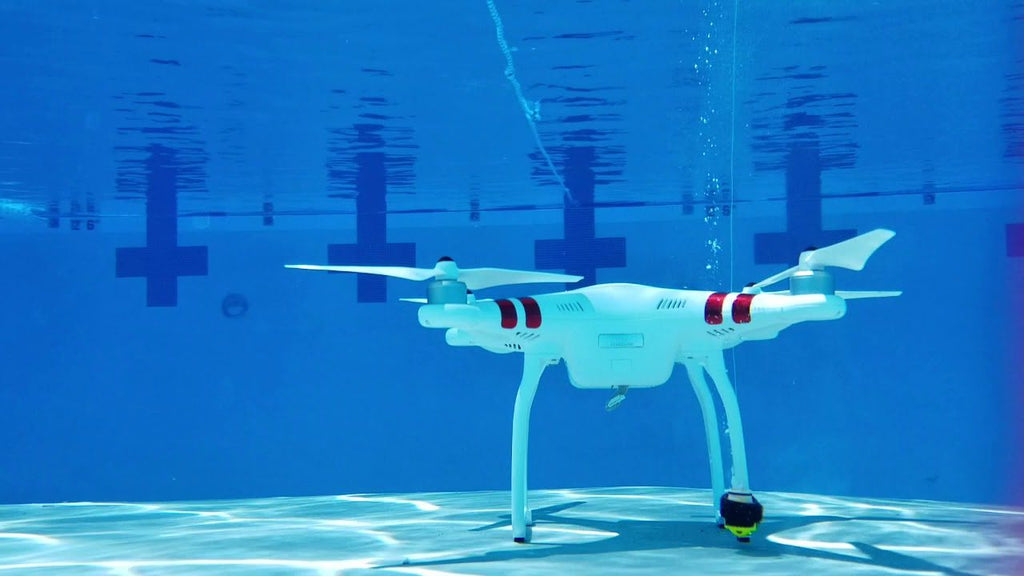
As you can see, there are many potential risks that can make your DJI end up in the bottom of the ocean. This is why I would recommend that you go for a purpose-built fishing drone if you are serious about surf fishing.
A purpose-built fishing drone like Fisherman Max or SplashDrone 4 can carry up to baits from 2 kg to 3.5 kg, they are totally IP67 waterproof and can fly in winds up to 40 mph without any issues. Even if you land it on the water, you can fly it back to the shore safely. More importantly, a purpose-built fishing drone is covered by warranty because it is designed for that purpose.
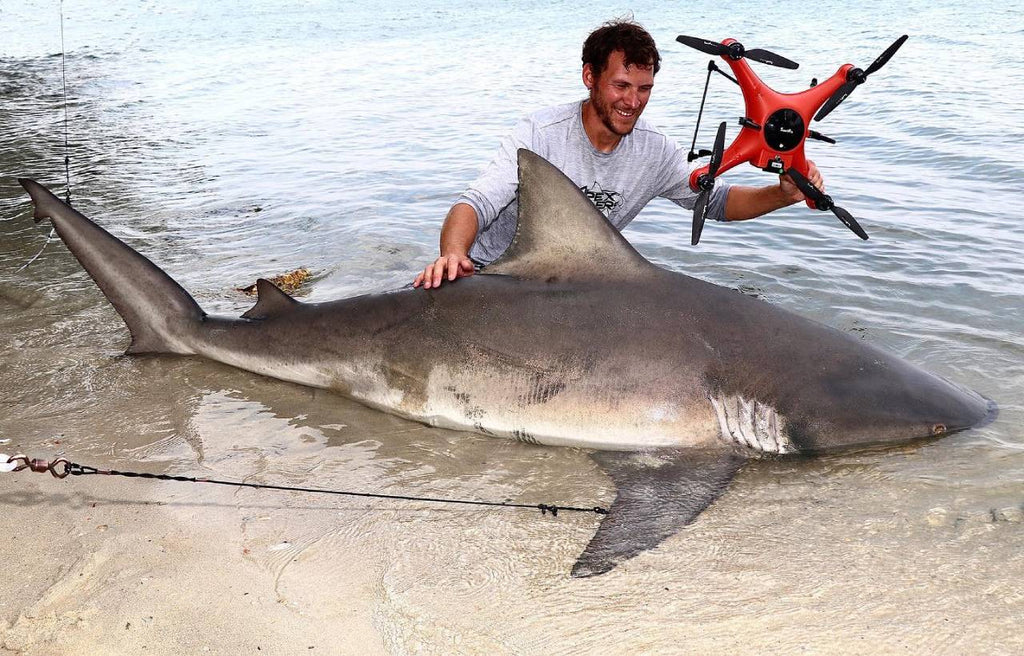
How much weight can DJI carry?
As mentioned above, DJI drones have a very limited payload capacity. Most of their drone power is allocated to the flight speed instead of carrying payloads. Before you attempt your DJI drone for bait dropping, I would strongly recommend you to check the list below to be aware of the weight limits of the model you have.
- DJI Phantom Pro V2: safe 500 grams / max 1 kg
- DJI Phantom 4: safe 500 grams / max 1.3kg
- DJI Phantom 3: safe 500 grams / max 1kg
- DJI Mavic pro: safe 400 grams / max 800 gram
- DJI Mavic air: safe 150 / max 200 grams
- DJI Mavic air 2: safe 350 grams / max 750 grams
- DJI Inspire 2: safe 1.3 kg / max 2 kg
DJI Spark and Mini cannot be used for fishing
In the list above, we leave out 2 of DJI’s most popular models: Mini and Spark. It is because Spark and Mini have very little payload capacity, let’s say, 200 grams or less. By adding a bait release device to it, you are already risking your drone. Even if there is nothing attached, high winds could knock the drone out of the sky. Spark and Mini are purely good for photography and videography.
Are There Any Benefits of DJI Drone for Fishing?
You might find that today still many fishermen are using DJI drones to fly their bait. After all, there are still some good things about DJI drones used for fishing that are worth mentioning.
DJI is good for beginner
A DJI Mavic Air with a third-party bait release is a good starter drone for practice. You can then upgrade to a purpose-built fishing drone until you get a hang of it. The Air 2 is sold at 799 US dollars. A second hand can be around 400 dollars.
DJI drones come with a bunch of sensors that can assist the flight stability very well, so even a fisherman with no drone experience can fly it properly in a short time. The Mavic and Phantom series are relatively small-sized and easy to carry with you to the beach.
High Resolution Aerial Video
Modern DJI drones are equipped with 4K cameras that provide anglers with a bird's-eye view of the fishing spot. This feature allows them to assess the underwater topography, identify potential fishing hotspots, and observe fish behavior, enabling more informed decision-making as to where their baits should go.
Conclusion
Whether to use DJI for fishing or not depends on what type of fisherman you are. DJI drones are good for those who target small fish near the shore with small baits. If you are a big-game angler or you seek a higher level of safety and productivity, a SwellPro fishing drone is something for you.

